General A-class photos: Difference between revisions
Pbcjohnston (talk | contribs) No edit summary |
Pbcjohnston (talk | contribs) Added photos and captions |
||
| Line 38: | Line 38: | ||
[[File:A-class battery 1.jpg|left|500px]] | [[File:A-class battery 1.jpg|left|500px]] | ||
A similar view, but looking aft into the engine room. The large flywheel for the Otto gasoline engine can be seen just beyond the battery. | A similar view, but looking aft into the engine room. The large flywheel for the Otto gasoline engine can be seen just beyond the battery. | ||
<small>Milne Special Collections, University of New Hampshire Library, Durham, N.H.</small> | |||
[[File:Red bar sub.jpg]] | |||
[[File:A-class Torpedoes at Cavite.jpg|left|500px]] | [[File:A-class Torpedoes at Cavite.jpg|left|500px]] | ||
Revision as of 11:47, 21 October 2023

Milne Special Collections, University of New Hampshire Library, Durham, N.H.
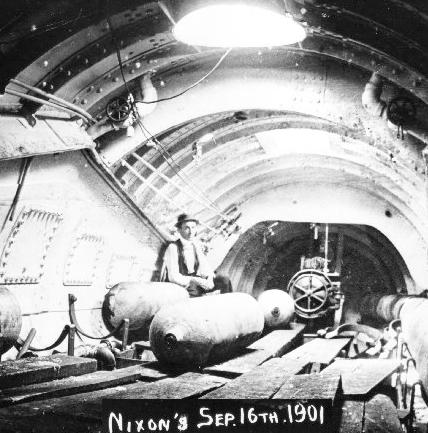
An A-class submarine under construction at the Crescent Shipyard in Elizabethport, NJ., September 16, 1901. This is looking forward from the middle of the boat and shows a worker sitting near high pressure air flasks that have not yet been installed. In the background is the boat's single torpedo tube. Based on the level of completion and the date on the photo, this boat is either Porpoise (Submarine No. 7) or Shark (Submarine No. 8).
Milne Special Collections, University of New Hampshire Library, Durham, N.H.

Another A-class boat under construction at the Crescent Shipyard. This is also looking forward from the middle of the boat. There is a gauge panel above the torpedo tube, likely for the air flasks. The sign on the tube door says "Hands Off".
Milne Special Collections, University of New Hampshire Library, Durham, N.H.
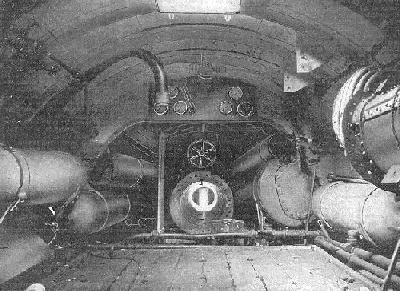
This is a smiliar view to the ones above, but this time the boat is nearly finished. Both the breech and muzzle doors of the torpedo tube are open. Note the wood planking over the battery well in the foreground.
Photo in the private collection of Ric Hedman.
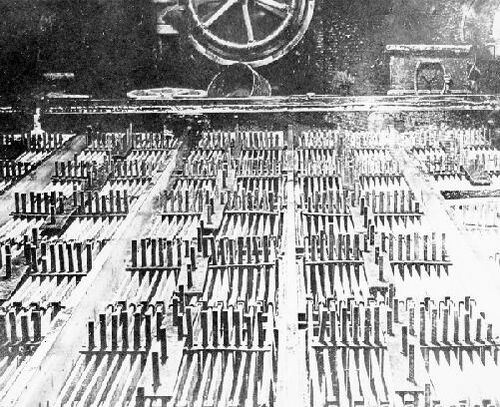
An A-class battery in the process of installation. The upright wooden pegs are called "cribbing" and are used to separate the indivdual lead plates of each battery cell. When full, the electrolyte solution would be right at the top of lead plates. This open top battery was extremely dangerous to work with, but it actually worked pretty well for 1901 technology. The breech door for the torpedo tube can be seen in the center background.
Milne Special Collections, University of New Hampshire Library, Durham, N.H.
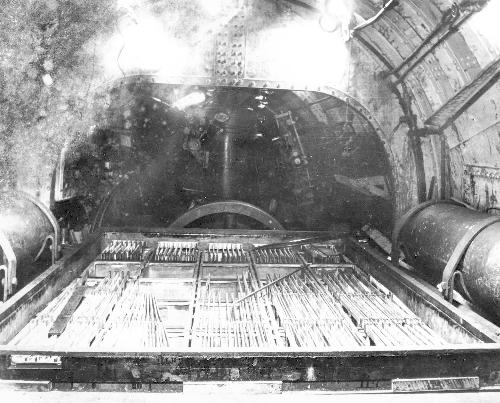
A similar view, but looking aft into the engine room. The large flywheel for the Otto gasoline engine can be seen just beyond the battery.
Milne Special Collections, University of New Hampshire Library, Durham, N.H.
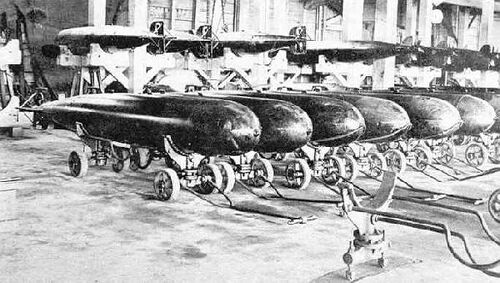
A host of Whitehead Mk 3 torpedoes stored at Naval Station Cavite, Philippines, 1906. These were the weapons used by the A-class submarines. They weighed 845 lbs. and were 11.6 feet long and 17.7 inches wide. They had a range of 800 yards at 27.5 knots and carried a warhead of 118 lbs. of wet gun cotton. These were the first torpedoes that had a gyroscope. This greatly improved accuracy.
Photo in the private collection of Ric Hedman.
Page created by:
Ric Hedman & David Johnston
1999 - 2023 - PigBoats.COM©
Mountlake Terrace, WA, Norfolk, VA
webmaster at pigboats dot com
